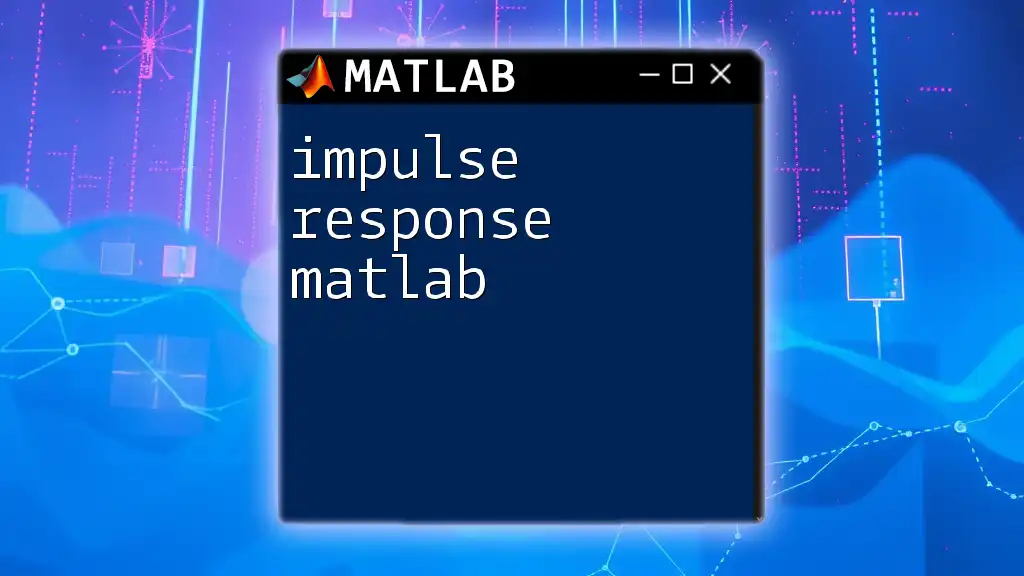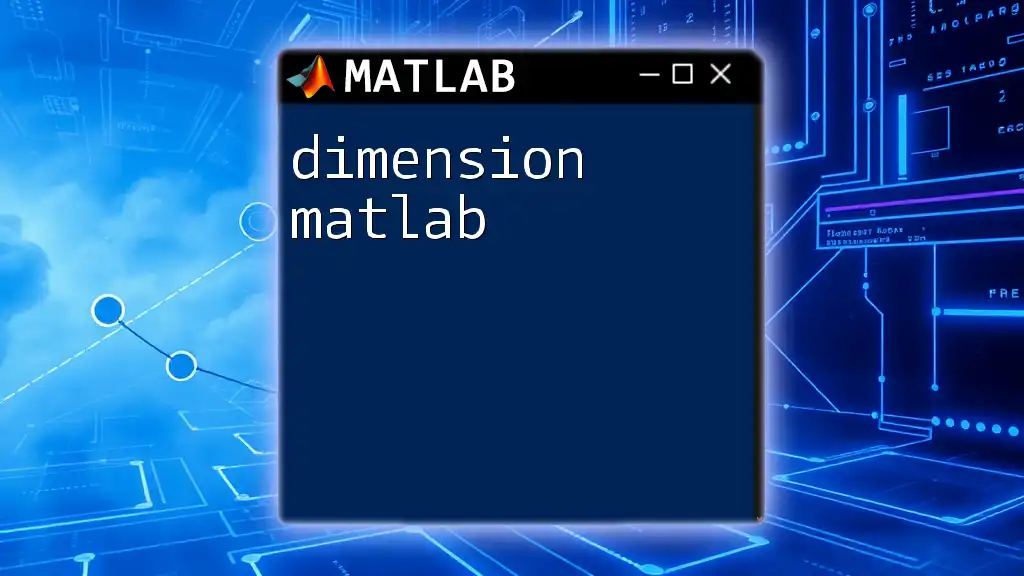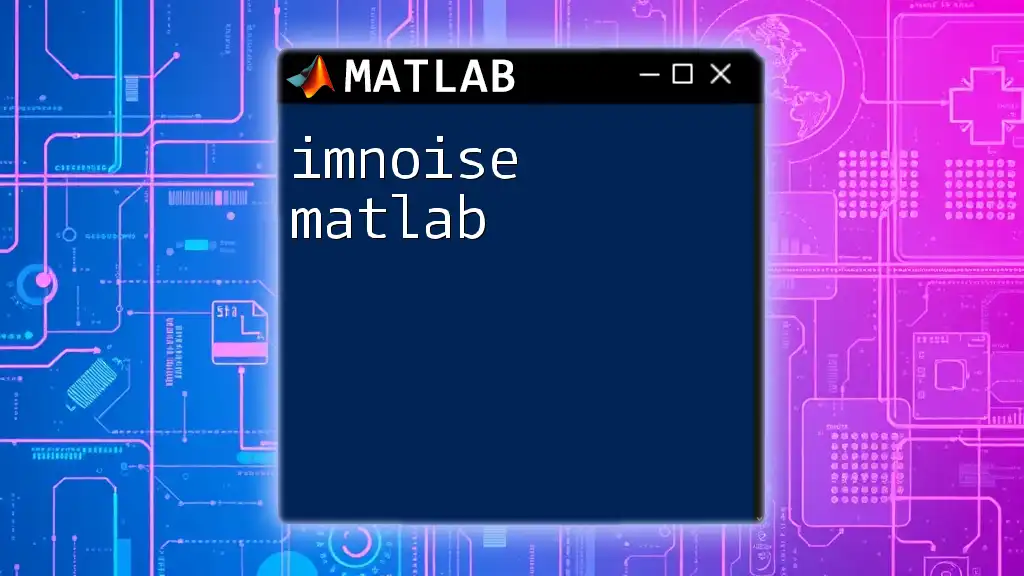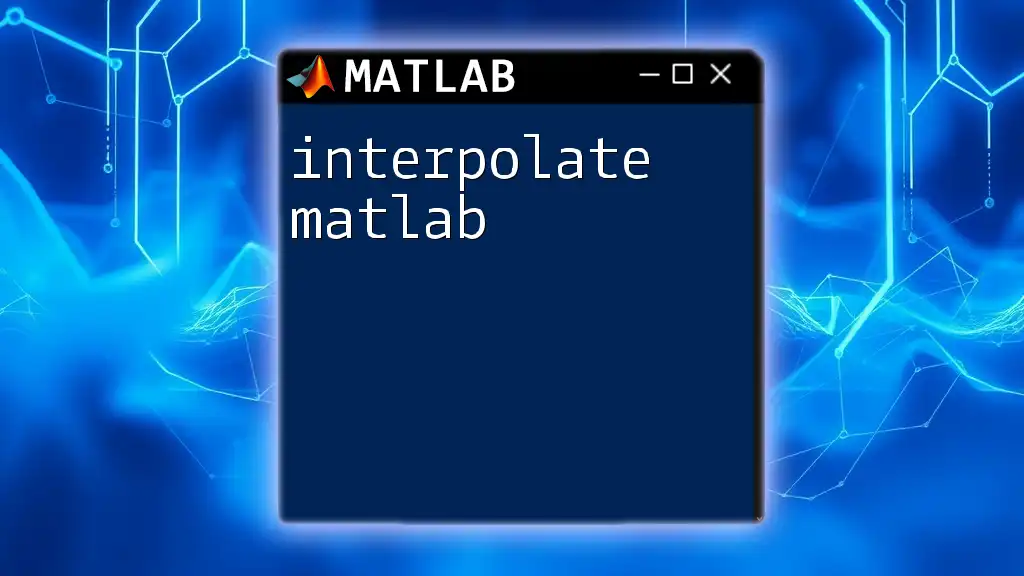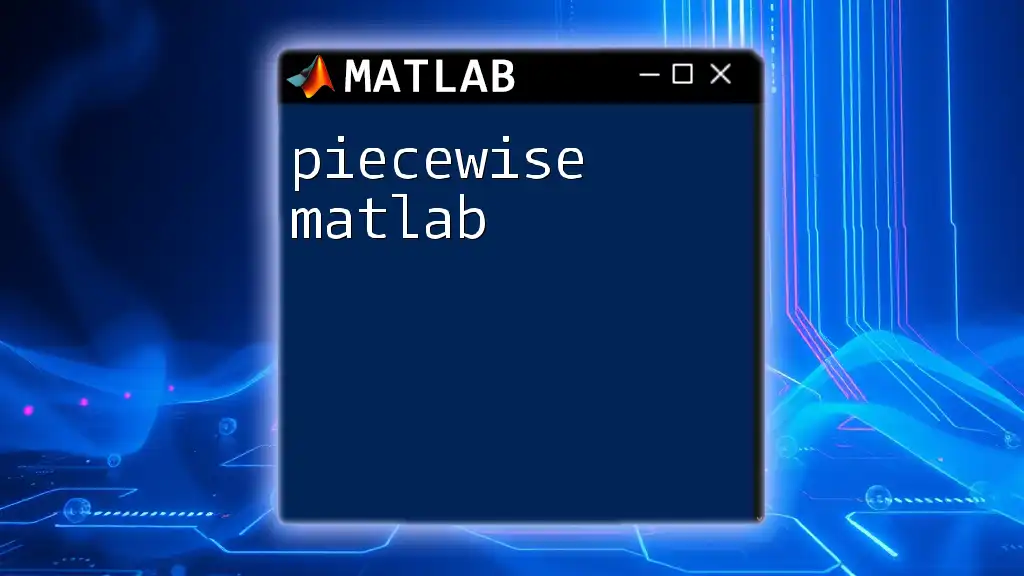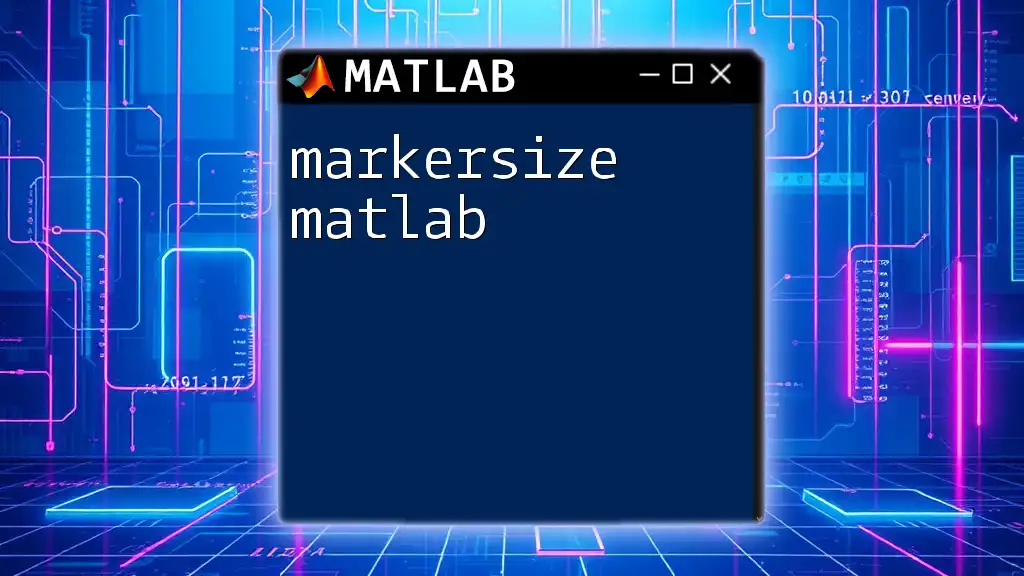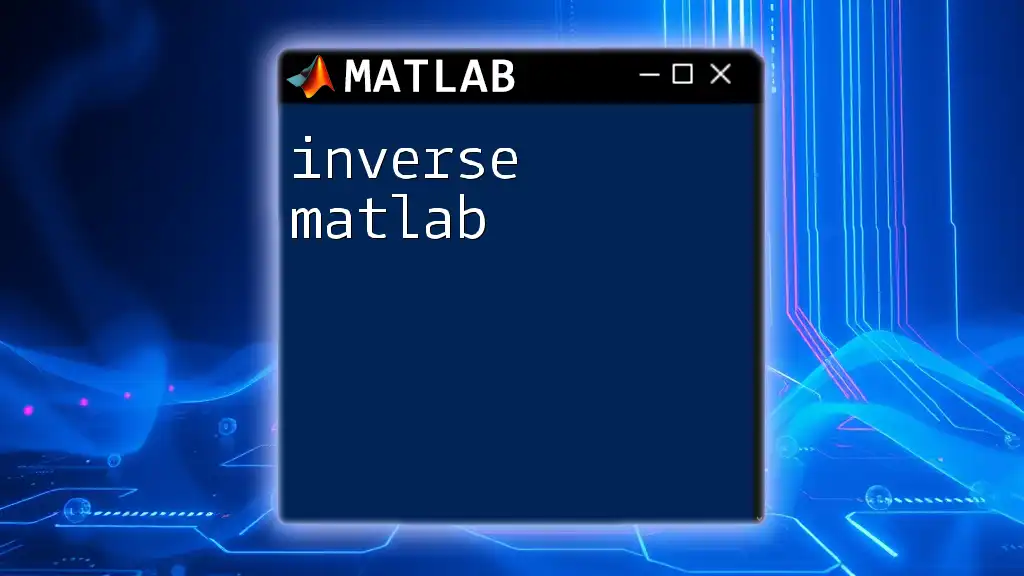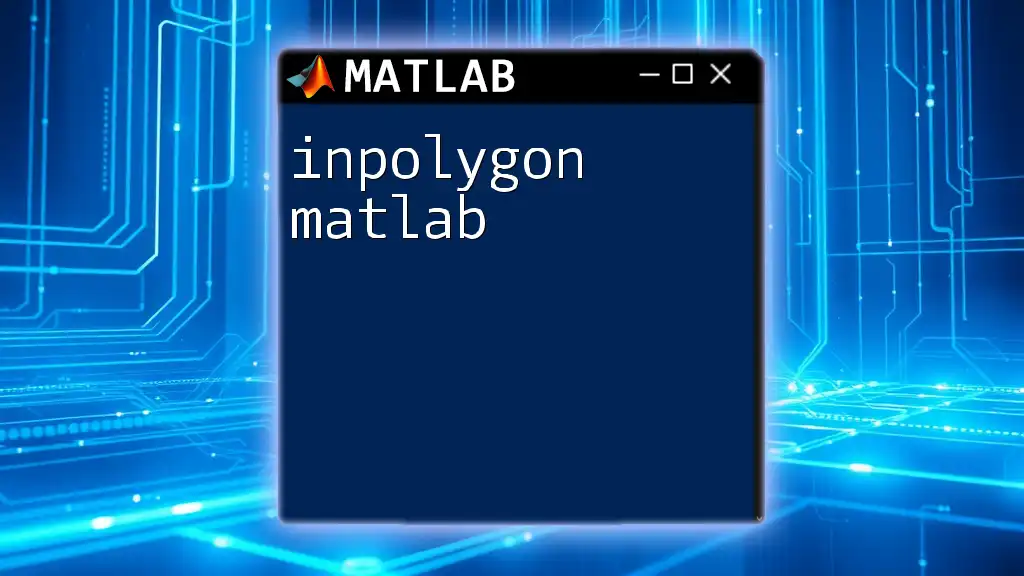Impulse response in MATLAB refers to the output of a system when subjected to a discrete impulse input, which can be easily analyzed using built-in functions.
Here’s a simple code snippet to illustrate how to compute and plot the impulse response of a discrete-time system using `impz`:
% Define the numerator and denominator of the system
num = [1]; % Numerator coefficients
den = [1, -0.5]; % Denominator coefficients
% Calculate impulse response
[h, t] = impz(num, den);
% Plot impulse response
figure;
stem(t, h);
title('Impulse Response');
xlabel('Samples');
ylabel('Amplitude');
grid on;
Understanding Impulse Response
Definition and Basic Concepts
Impulse Response is a fundamental concept in system theory and signal processing. It refers to the output of a linear time-invariant (LTI) system when it is subjected to an impulse input. The impulse signal, typically represented as a delta function (δ(t)), is defined as having an instantaneous spike at t = 0 and zero value everywhere else. Its mathematical representation is:
\[ \delta(t) = \begin{cases} 1 & \text{if } t = 0 \\ 0 & \text{otherwise} \end{cases} \]
Understanding the impulse response is crucial because it provides insights into the system's characteristics and behavior. An impulse response can reveal how a system reacts over time to inputs, making it essential for applications in control systems, signal filtering, and audio processing.
Importance of Impulse Response in Systems
The relationship between the impulse response and the transfer function is vital. The impulse response is the inverse Laplace transform of the system's transfer function, demonstrating how output reflects the system properties in the time domain.
Key properties of impulse response include:
- Linearity: The principle of superposition holds; multiple input signals will create outputs that are combined appropriately based on their individual responses.
- Time Invariance: The output does not change if the input is shifted in time, which simplifies analysis significantly.
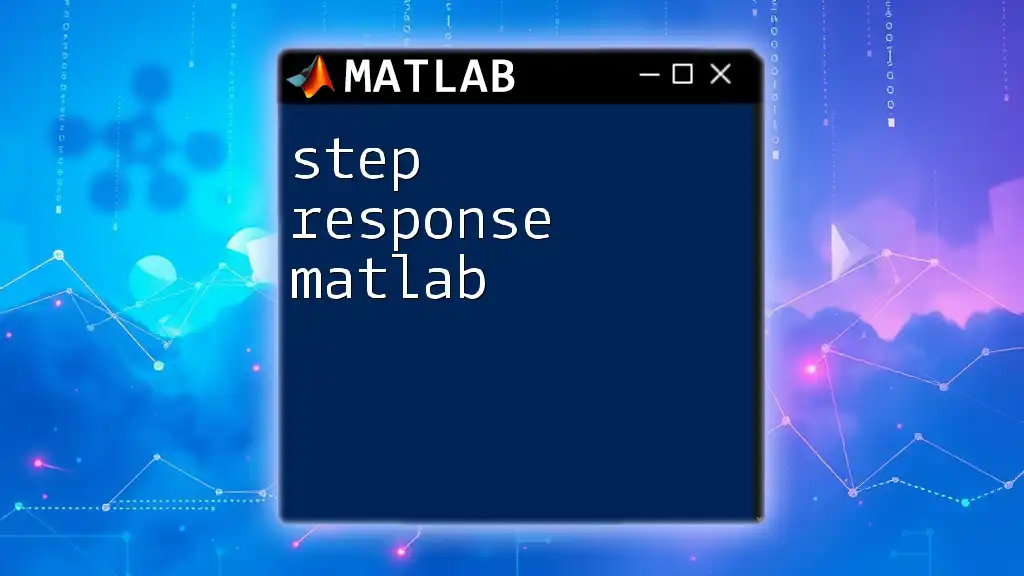
Generating Impulse Response in MATLAB
Creating an Impulse Signal
To analyze impulse response in MATLAB, first, you need to create an impulse signal. MATLAB offers straightforward ways to define impulse signals. Here’s a quick example of generating an impulse signal.
t = 0:0.01:1; % Time vector
impulse = [1, zeros(1, length(t) - 1)]; % Impulse signal
plot(t, impulse, 'r', 'LineWidth', 2);
title('Impulse Signal');
xlabel('Time (s)');
ylabel('Amplitude');
grid on;
In this code, we define a time vector `t` from 0 to 1 second with intervals of 0.01 seconds, followed by creating an impulse signal that has a value of 1 at t = 0 and 0 elsewhere.
System Representation
Next, we need to define a linear time-invariant (LTI) system in MATLAB. This is typically done using transfer functions. For example, for a first-order system, the transfer function can be defined as follows:
num = [1]; % Numerator coefficients
den = [1, 1]; % Denominator coefficients
sys = tf(num, den); % Creating transfer function
The `tf` command creates a transfer function object `sys` that you can use to explore the system's properties further.

Calculating Impulse Response
Using Built-in MATLAB Functions
One of the most effective ways to compute the impulse response in MATLAB is using the built-in `impulse()` function. This function allows users to visualize how the system responds over time to an impulse input. Here’s how to use it:
figure;
impulse(sys); % Plotting impulse response
title('Impulse Response of First-Order System');
This command generates a plot that illustrates the system's impulse response, demonstrating how output values evolve over time after an impulse is applied.
Manual Calculation of Impulse Response
Alternatively, you can calculate the impulse response using convolution. Convolution is a method where the impulse response is determined by the convolution of the input signal with the system's impulse response. Here’s an example illustrating this approach:
t = 0:0.01:10; % Time vector
x = [1, zeros(1, length(t) - 1)]; % Input signal (impulse)
h = [1, -0.5]; % Impulse response (example)
y = conv(x, h); % Convolution of the input signal and impulse response
plot(t, y(1:length(t)), 'b', 'LineWidth', 2);
title('Output Signal via Convolution');
xlabel('Time (s)');
ylabel('Amplitude');
grid on;
This snippet creates a simple input signal representing an impulse, defines a sample impulse response, and performs the convolution, visualizing how the output signal changes over time.
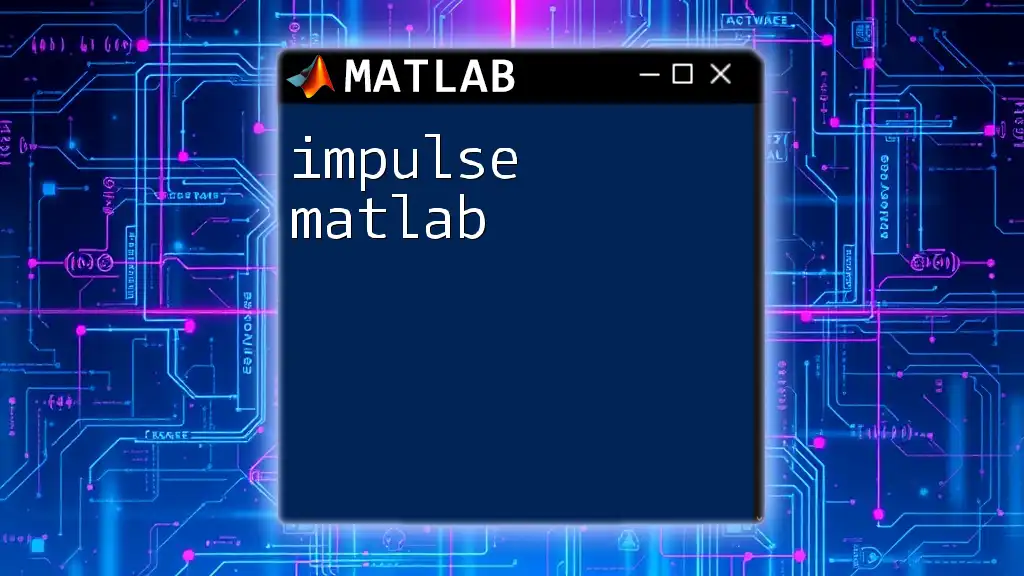
Analyzing Impulse Response
Visual Analysis
Visualizing impulse responses helps in intuitively understanding system behavior. The resulting output signal plots reveal how quickly the system reacts to inputs and how signals decay or stabilize over time. An informative example would involve plotting the resulting sequence of impulses or responses derived from previous sections.
figure;
stem(y);
title('Impulse Response Output');
xlabel('Sample Number');
ylabel('Amplitude');
Statistical Analysis
It is essential to evaluate the system's stability and causality based on the impulse response analysis. Stability, often identified as BIBO (Bounded Input Bounded Output) stability, determines if a bounded input will always yield a bounded output. Causality refers to whether the output at any moment only depends on past and present inputs, not future ones. Understanding these concepts is crucial in real-world applications of impulse responses.
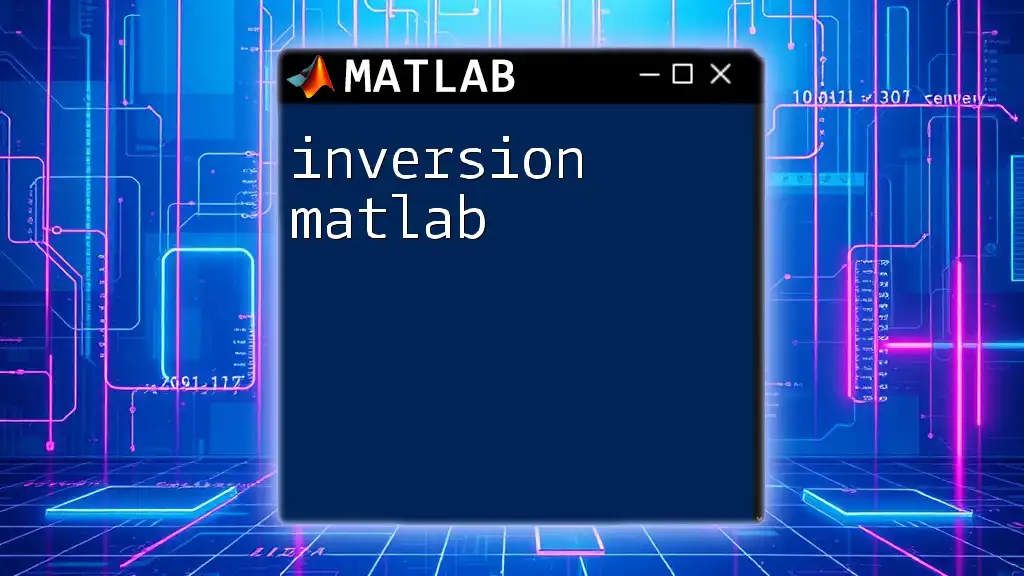
Advanced Topics in Impulse Response
Frequency Response from Impulse Response
The impulse response holds a profound relationship with the frequency response of a system. The characteristics in the time domain can translate into vital information about system performance in the frequency domain. You can leverage MATLAB to analyze this relationship as well:
[mag, phase] = bode(sys);
figure;
subplot(2,1,1);
semilogx(mag); % Magnitude plot
title('Frequency Response Magnitude');
xlabel('Frequency (rad/s)');
ylabel('Magnitude (dB)');
subplot(2,1,2);
semilogx(phase); % Phase plot
title('Frequency Response Phase');
xlabel('Frequency (rad/s)');
ylabel('Phase (degrees)');
This series of commands computes and visualizes the magnitude and phase of the frequency response, offering insights into system behavior across different frequencies.
Real-World Applications
Understanding impulse response has vital applications in diverse fields:
- Engineering: In control systems, impulse response helps design systems that react favorably over various input scenarios, ensuring stability and performance.
- Audio Processing: Impulse response reveals how systems such as audio filters shape sound, enabling effective audio signal processing and enhancing sound quality.
- Telecommunications: Accurate analysis of impulse response helps in maintaining signal integrity during transmission, ensuring clear communication.

Conclusion
In summary, mastering the concept of impulse response in MATLAB allows users to efficiently explore and analyze system behavior across various applications. The tools and techniques discussed provide a solid foundation for leveraging impulse response in simulations and real-world applications. By familiarizing themselves with these MATLAB capabilities, learners can significantly enhance their understanding and proficiency in signal processing and system dynamics. For further exploration, consider diving into additional MATLAB commands related to signal processing and expanding your knowledge through practical experimentation.

